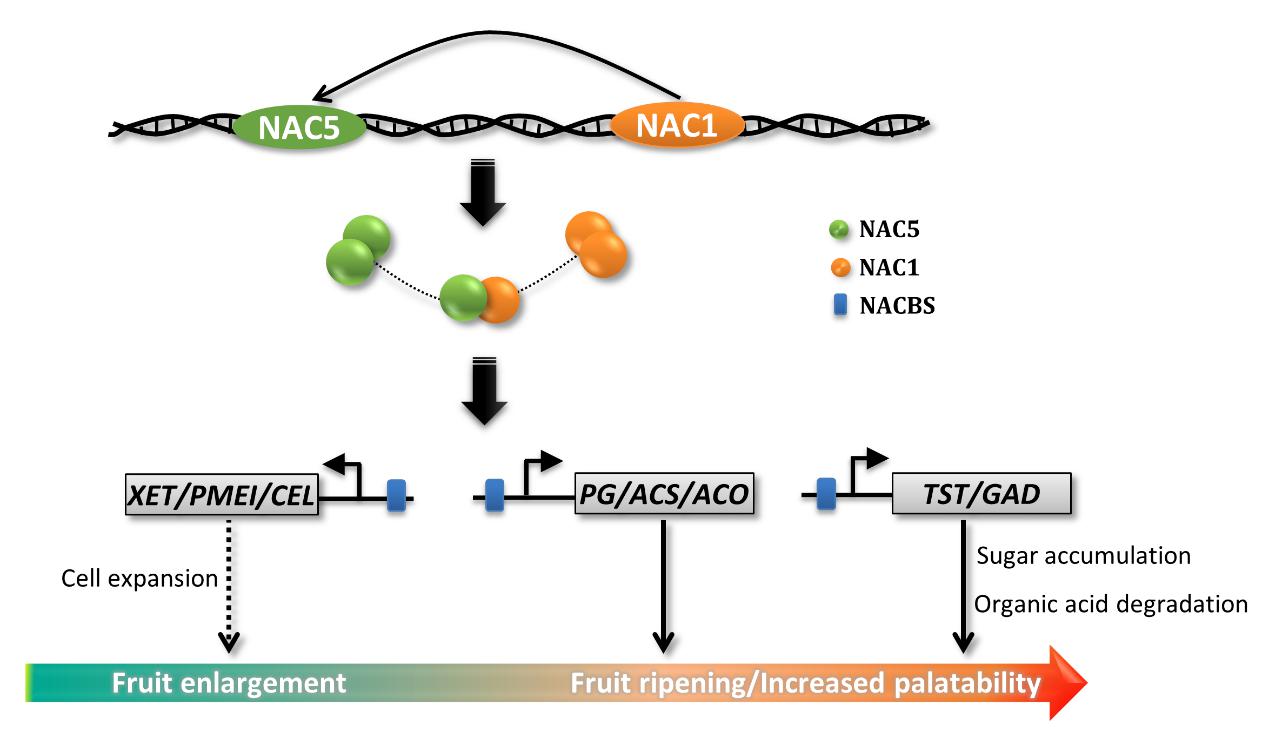Name:HAN Yuepeng
Tell:
Email:yphan@wbgcas.cn
Organization:Wuhan Botanical Garden
Two Transcription Factors Regulate Fruit Ripening and Taste
2023-12-19
Fruit maturity date(MD) is critical for market supply period and fruit taste. It is affected by fruit setting date and the length of fruit enlargement and ripening. A better understanding of fruit MD regulation provides guidance for fruits that tend to decay rapidly after harvest, such as peach.
Researcher from Wuhan Botanical Garden demonstrated that two adjacent NAM-ATAF1/2-CUC2 (NAC) transcription factors (TFs), namely PpNAC1 and PpNAC5, both functioned as ripening enhancers with the former having a stronger ripening acceleration effects. It provides insight into understanding how the ripening process makes fruit more delicious.
The proteins (PpNAC1 and PpNAC5) were found to promote fruit enlargement and ripening through activating genes associated with cell elongation, cell wall degradation and ethylene biosynthesis. Moreover, they can enhance fruit taste through inducing transcription of genes related to sugar accumulation and organic acid degradation. Interestingly, both PpNAC1 and PpNAC5 orthologues were found in fruit-producing plants, but not in fruitless plants, suggesting their crucial role in fruit development.
Results have been published in the New Phytologist entitled “Two adjacent NAC transcription factors regulate fruit maturity date and flavor in peach”. This project was supported by grants from the Strategic Priority Research Program of the Chinese Academy of Sciences, the National Natural Science Foundation of China, the China Agriculture Research System, Hubei Hongshan Laboratory and Hubei Province Science and Technology Innovation Talent and Service Special International Science and Technology Cooperation Project.

A proposed model shows how adjacently arranged NAC1 and NAC5 together regulate fruit maturity date and palatability in fleshy fruits of dicots (Image by WBG)